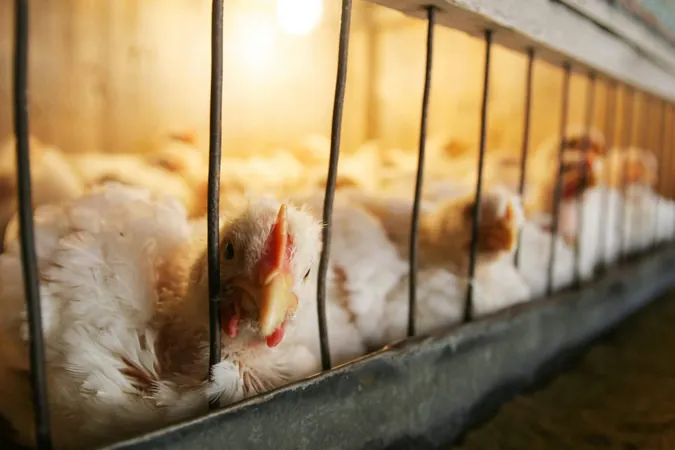
New Studies Reveal Alarming RSV Risk Factors in Older Adults and Show How Kids Fuel Household Transmission
2025-03-18
Author: Michael
Two groundbreaking studies on respiratory syncytial virus (RSV) have shed light on crucial risk factors for older adults and the dynamics of household transmission, particularly highlighting the role of children. The findings underscore the urgent need for preventive measures, especially as RSV circulates widely each respiratory season.
Hospitalization Rates Soar Among Seniors
A study published in Eurosurveillance examined electronic medical records from over 165,000 individuals aged 60 and above across four respiratory virus seasons in Navarre, Spain, from 2016 to 2020. The data revealed that those aged 75 and older accounted for an astonishing 76.1% of RSV hospitalizations, indicating their heightened vulnerability. Among the older cohort, hospitalization rates exceeded 100 per 100,000 individuals, with particularly alarming spikes seen in those aged 85 to 89 (243.9/100,000) and 90 to 94 (268.7/100,000). Rural residents were also shown to be at a higher risk, receiving 105.4 hospitalizations per 100,000, compared to 68.9 per 100,000 in urban areas.
High-Risk Groups Identified for Vaccination Priority
The study identified key high-risk conditions that contributed to increased hospitalization rates. Among those without high-risk conditions, the hospitalization rate was 18.8 per 100,000, but this skyrocketed to 131.1 among those with high-risk conditions such as blood cancers (399.0/100,000) and nursing home residency (366.7/100,000). Patients with chronic obstructive pulmonary disease (COPD) experienced a hospitalization rate of 269.7 per 100,000, while rates for asthma, cardiovascular disease, chronic kidney disease, and dementia surpassed 200 per 100,000.
Researchers recommend prioritizing vaccination for people aged 60 and above with hematological cancers or nursing home living, as well as older adults with COPD or functional dependency. The aim is to address the healthcare burden during periods of high RSV activity—potentially preventing a significant number of hospitalizations and RSV-related deaths.
Children Under 12 Are Primary Spreaders in Households
A second study conducted by the University of Washington in Seattle explored RSV transmission within households in the U.S. by analyzing samples and data from 3,100 individuals across 200 households from June 2022 to May 2023. This research revealed that children younger than 12 play a vital role in spreading the virus among family members. Among the studied participants, 10% tested positive for RSV, with 94% presenting symptoms.
The study identified that if the index case was detected more than a week prior, the risk of secondary transmission increased significantly. Moreover, the genomic analysis of the viruses indicated that multiple infections appearing within a 14-day window were likely due to transmission within the household, underscoring the critical role children play in these dynamics.
Conclusion: Urgent Need for Preventive Strategies
Given the high hospitalization rates among older adults and the significant household transmission patterns, these studies highlight an urgent need for targeted vaccination strategies and public health initiatives. By focusing on high-risk populations and understanding household dynamics, health officials can better prepare for RSV outbreaks, ultimately saving lives and reducing strain on healthcare systems.









 Brasil (PT)
Brasil (PT)
 Canada (EN)
Canada (EN)
 Chile (ES)
Chile (ES)
 Česko (CS)
Česko (CS)
 대한민국 (KO)
대한민국 (KO)
 España (ES)
España (ES)
 France (FR)
France (FR)
 Hong Kong (EN)
Hong Kong (EN)
 Italia (IT)
Italia (IT)
 日本 (JA)
日本 (JA)
 Magyarország (HU)
Magyarország (HU)
 Norge (NO)
Norge (NO)
 Polska (PL)
Polska (PL)
 Schweiz (DE)
Schweiz (DE)
 Singapore (EN)
Singapore (EN)
 Sverige (SV)
Sverige (SV)
 Suomi (FI)
Suomi (FI)
 Türkiye (TR)
Türkiye (TR)
 الإمارات العربية المتحدة (AR)
الإمارات العربية المتحدة (AR)